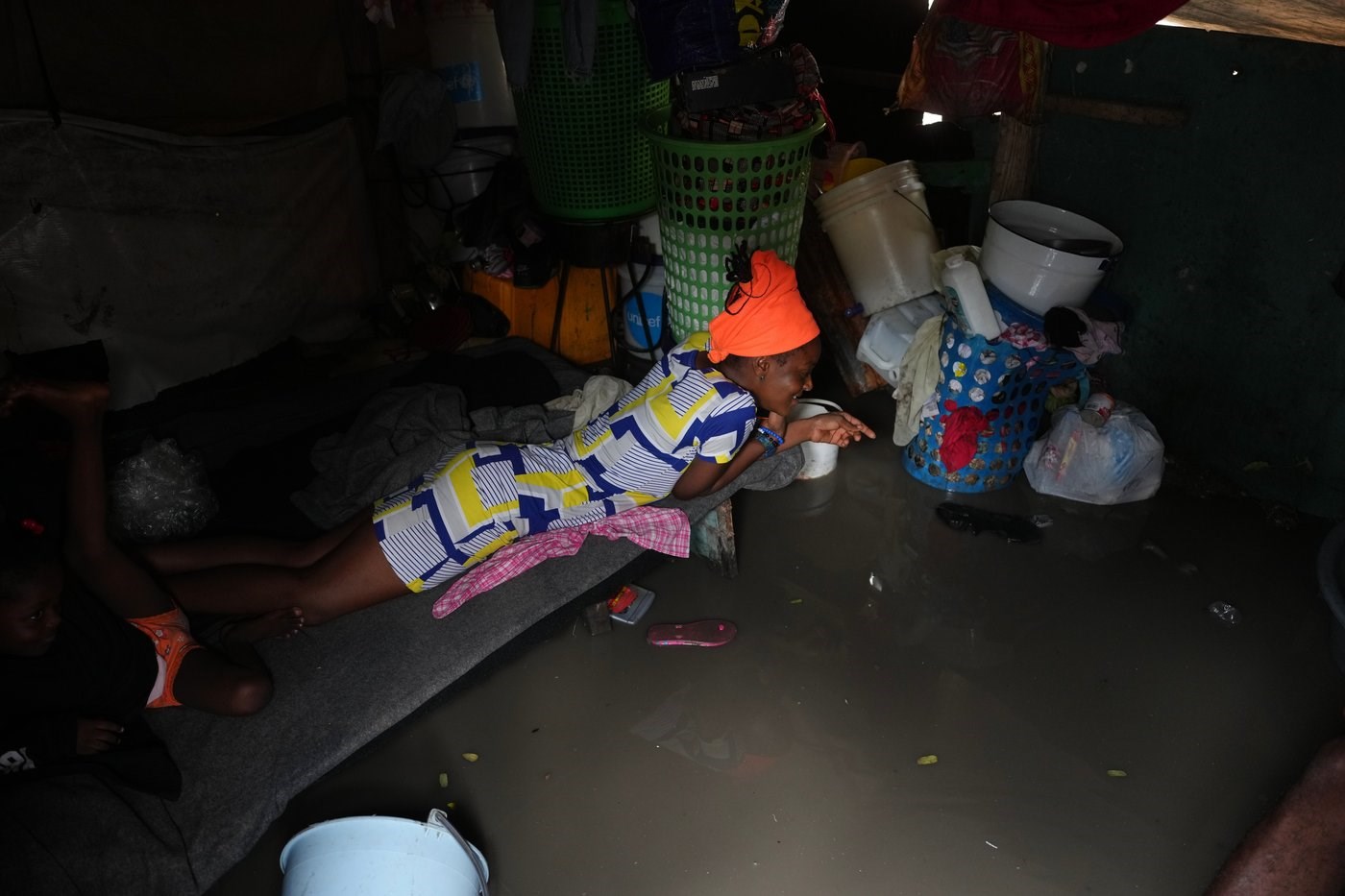
A woman lies inside a shack flooded by rain brought by Hurricane Melissa at a shelter for families displaced by gang violence in Port-au-Prince, Haiti, Wednesday, Oct. 29, 2025. (AP Photo/Odelyn Joseph)
Republished October 29, 2025 - 3:37 PM
Original Publication Date October 28, 2025 - 9:56 AM
The death toll was growing Wednesday as Hurricane Melissa made its way across Cuba and headed for the Bahamas, a day after making landfall in Jamaica as one of the region's strongest storms on record.
Officials in Haiti said at least 25 people were killed as waters rose in heavy rain. Eight deaths were reported in Jamaica, where the tropical storm warning has been lifted, and one in the Dominican Republic.
The U.S. National Hurricane Center said a “dangerous storm surge” was expected in the Bahamas through the night, with eastern Cuba still at risk. Maximum sustained winds were 100 mph (155 kph) as what had roared into Jamaica as a Category 5 storm was now at Category 2.
Here is what to know:
Countries still at risk
The National Hurricane Center said a hurricane warning remained for the Cuban provinces of Granma, Santiago de Cuba, Guantanamo, Holguin, and Las Tunas, as well as the southeastern and central Bahamas and Bermuda. It said people should remain sheltered.
The center warned that flash flooding and landslides were possible in Hispaniola, the island that Haiti and the Dominican Republic share. And it said a storm surge of 4 feet (1.2 meters) to 7 feet (2.1 meters) was possible in the southeastern Bahamas on Wednesday.
Aid efforts
Humanitarian efforts have begun, while local officials struggle to contact some areas and assess the storm's damage. Jamaica’s education minister said 77% of the island was without power.
The U.S. government said it was deploying a disaster response team and search and rescue personnel to the region, in a test for the Trump administration after its massive cuts to foreign aid this year.
The United Nations was preparing aid, and Britain said it is sending 2.5 million pounds ($3.3 million) in humanitarian funding to Jamaica.
A record storm
Melissa was the strongest to hit Jamaica since record-keeping began 174 years ago.
The hurricane's 185 mph (295 kph) winds and 892 millibars of central pressure tied two records for the strongest Atlantic storm on landfall.
The pressure — the key measurement meteorologists use — tied 1935’s Labor Day hurricane in Florida, while wind speed tied a 1935 hurricane and 2019’s Hurricane Dorian, said hurricane scientists Phil Klotzbach of Colorado State University and Brian McNoldy of the University of Miami.
Rapid strength and climate change
Melissa reached tropical storm status last Tuesday and became a hurricane Saturday. It rapidly intensified into a Category 5 hurricane early Monday.
Scientists said Melissa is the fourth storm in the Atlantic this year to undergo rapid intensification. Storms that ramp up so quickly complicate forecasting and make it harder to plan for emergencies.
Climate scientists have linked the rapid intensification to warming ocean temperatures. Abnormally warm ocean waters of about 2 to 3 degrees Celsius (3.6 to 5.4 degrees Fahrenheit) above normal helped double Melissa’s wind speed in less than 24 hours, scientists said.
Warmer temperatures also give hurricanes fuel to unleash more rain.
___
The Associated Press’ climate and environmental coverage receives financial support from multiple private foundations. AP is solely responsible for all content. Find AP’s standards for working with philanthropies, a list of supporters and funded coverage areas at AP.org.
News from © The Associated Press, 2025